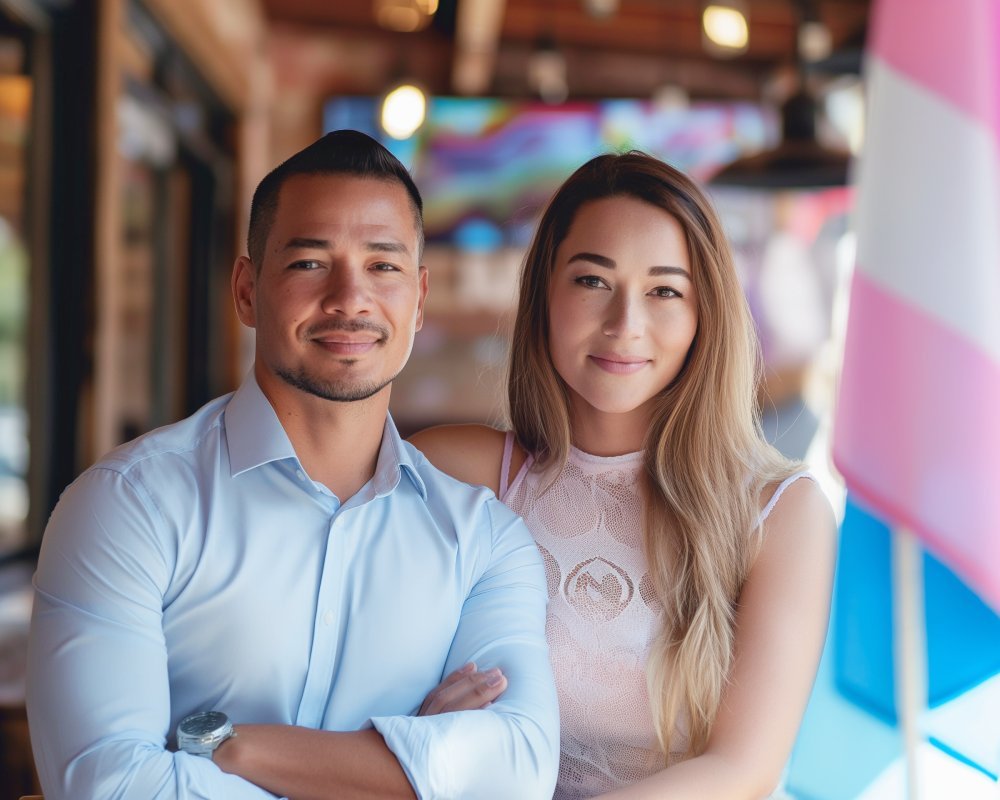
Understanding Transgender People, Gender Identity, and Gender Expression – In recent years, there has been an increasing awareness and dialogue about transgender people, gender identity, and gender expression. However, despite this growing visibility, many still struggle to fully understand these concepts. This blog post aims to provide an in-depth exploration of these topics, offering clarity and fostering a more inclusive and respectful society.
Defining Key Terms
To begin understanding transgender people, gender identity, and gender expression, we need to define these terms clearly.
Transgender: A transgender person is someone whose gender identity differs from the sex they were assigned at birth. For example, a person assigned male at birth who identifies and lives as a woman is a transgender woman. Conversely, a person assigned female at birth who identifies and lives as a man is a transgender man.
Gender Identity: Gender identity is an individual’s internal sense of their own gender, whether that is male, female, a blend of both, neither, or something else. This identity may or may not align with the sex assigned at birth.
Gender Expression: Gender expression refers to the external manifestation of an individual’s gender identity, including behavior, clothing, hairstyle, voice, and body characteristics. This can range from masculine to feminine, and everything in between or outside of those categories.
Understanding these definitions is the first step in understanding transgender people, gender identity, and gender expression.

The Difference Between Gender Identity and Sexual Orientation
One common area of confusion is the difference between gender identity and sexual orientation. To better understand transgender people, gender identity, and gender expression, it is important to distinguish these concepts.
Gender Identity: As mentioned, this is about who you are. It’s how individuals perceive themselves and what they call themselves. It can be male, female, both, neither, or anywhere along the gender spectrum.
Sexual Orientation: This refers to who you are attracted to. It’s about whom you find physically, emotionally, or romantically attractive. Common terms include heterosexual, homosexual, bisexual, and asexual, among others.
A transgender person can have any sexual orientation. For instance, a transgender woman (someone who is assigned male at birth but identifies as female) can be attracted to men, women, both, or neither. Thus, understanding transgender people, gender identity, and gender expression requires recognizing that gender identity and sexual orientation are distinct but interconnected aspects of a person’s overall identity.
Gender Dysphoria and the Transgender Experience
Gender dysphoria is a term that often comes up when discussing transgender issues. It refers to the distress a person feels due to a mismatch between their gender identity and the sex they were assigned at birth. This distress can be profound and impact various aspects of life, including mental health, physical well-being, and social interactions.
Understanding transgender people, gender identity, and gender expression involves acknowledging the challenges faced by transgender individuals. Many transgender people experience gender dysphoria to varying degrees. This condition is recognized by medical professionals and can be alleviated through various means, including social transition (changing name, pronouns, appearance), medical transition (hormone therapy, surgeries), and psychological support.
Advertisement · Scroll to continue
Recommended
The Process of Transition
For many transgender individuals, transitioning is a critical part of aligning their gender identity with their physical and social selves. Understanding transgender people, gender identity, and gender expression requires a comprehension of the different types of transitions:
Social Transition: This involves changes in a person’s social life, such as using a new name, pronouns, and dressing in a way that aligns with their gender identity. Social transition is often the first step and can significantly alleviate gender dysphoria.
Medical Transition: Medical transition can include hormone replacement therapy (HRT) and various gender-affirming surgeries. Hormone therapy helps develop secondary sex characteristics, such as breast development in transgender women or facial hair growth in transgender men. Surgeries can include top surgery (breast augmentation or removal), bottom surgery (genital reconstruction), and other procedures that help align the body with gender identity.
Legal Transition: This involves changing legal documents to reflect a person’s gender identity. It can include updating the name and gender marker on birth certificates, driver’s licenses, passports, and other official documents.
Understanding transgender people, gender identity, and gender expression means recognizing that the transition process is highly personal and can vary significantly from one individual to another. Not all transgender people pursue medical or legal transition, and their identity is valid regardless of the steps they choose to take.

Challenges Faced by Transgender People
Understanding transgender people, gender identity, and gender expression also involves recognizing the challenges and discrimination they often face. Transgender individuals can encounter significant obstacles in various areas of life, including:
Healthcare: Transgender people often face barriers to accessing appropriate healthcare. This can include a lack of knowledgeable healthcare providers, denial of care, and difficulty obtaining insurance coverage for gender-affirming treatments.
Employment: Discrimination in the workplace is a significant issue. Transgender individuals are at higher risk of unemployment, underemployment, and workplace harassment.
Legal Protections: Legal recognition and protections for transgender people vary widely by location. In many places, transgender individuals do not have adequate legal protections against discrimination, impacting their ability to live safely and authentically.
Violence and Harassment: Transgender people, especially transgender women of color, face high rates of violence and harassment. This can occur in public spaces, at work, in healthcare settings, and even within their own families.
The Importance of Allyship and Support
Understanding transgender people, gender identity, and gender expression also means recognizing the importance of allyship. Allies can play a crucial role in supporting transgender individuals by:
Educating Themselves: Learn about transgender issues, terminology, and the challenges faced by transgender people. Understanding the correct use of pronouns and the significance of respecting a person’s chosen name can make a significant difference.
Advocating for Rights: Support policies and laws that protect the rights of transgender people. This includes anti-discrimination laws, access to healthcare, and legal recognition of gender identity.
Creating Inclusive Spaces: Foster environments that are inclusive and respectful of transgender people. This can involve using inclusive language, providing gender-neutral restrooms, and ensuring that transgender individuals feel safe and valued.
Listening and Supporting: Listen to transgender people’s experiences and validate their feelings. Providing emotional support and being a trusted ally can have a profound impact on a transgender person’s well-being.

Advertisement · Scroll to continue
Recommended
Positive Developments and Future Directions
Despite the challenges, there have been significant strides in the visibility and acceptance of transgender people. Understanding transgender people, gender identity, and gender expression involves acknowledging these positive developments and the work that still needs to be done.
Increased Visibility: Transgender individuals are becoming more visible in media, politics, and public life. This visibility helps to humanize transgender experiences and combat stereotypes.
Legal Advances: Many countries and states have implemented laws that protect transgender people from discrimination. These legal protections are crucial for ensuring the rights and dignity of transgender individuals.
Medical Recognition: The medical community is increasingly recognizing the importance of gender-affirming care. This includes developing guidelines for the treatment of transgender patients and improving access to necessary medical services.
Cultural Shifts: Society is gradually becoming more accepting of diverse gender identities. This cultural shift is reflected in changes in language, increased support for transgender rights, and the growing inclusion of transgender voices in public discourse.
Conclusion – Understanding Transgender People, Gender Identity, and Gender Expression
In conclusion, understanding transgender people, gender identity, and gender expression is vital for fostering a more inclusive and respectful society. By defining key terms, distinguishing gender identity from sexual orientation, recognizing the challenges faced by transgender individuals, and promoting allyship and support, we can create a world where everyone is free to live authentically.
The journey toward full acceptance and understanding of transgender people, gender identity, and gender expression is ongoing. It requires continuous education, advocacy, and empathy. By embracing diversity and championing the rights of transgender individuals, we contribute to a more just and compassionate world for all.
Through this comprehensive exploration, we hope to have provided clarity on understanding transgender people, gender identity, and gender expression, and to have encouraged a more inclusive perspective.
Advertisement · Scroll to continue

More Recommended
First Time Gay: What It Was Like
First Time Gay: What It Was Like Coming Out & First Gay Experiences: 15 Honest [...]
The Success of Lesbian Entrepreneurs in Business
The Success of Lesbian Entrepreneurs in Business Lesbian entrepreneurs have been paving the way in [...]
What Is a Stud Lesbian?
What Is a Stud Lesbian? A Comprehensive Exploration of Identity and Culture In the rich [...]
Capitalizing on Diversity: Why Brands Should Support and Market Gay-Owned Businesses
Capitalizing on Diversity: Why Brands Should Support and Market Gay-Owned Businesses – to: “Leveraging Diversity: [...]
Anti Gay Discrimination
Anti Gay Discrimination: Understanding the Fight for LGBTQ+ Equality in the U.S. Discrimination in any [...]
30+ Gay Dinosaur Jokes
30 Gay Dinosaur Jokes – Looking to add some prehistoric flair to your pride? 🦕🌈 [...]
Visibility and Representation: The Rise of Lesbian-Owned Companies in Marketing
Visibility and Representation: The Rise of Lesbian-Owned Companies in Marketing In recent years, there has [...]
We Need LGBTQ+ Urbanism
We Need LGBTQ+ Urbanism: Redefining Cities for Inclusivity Cities are the lifeblood of modern society, [...]
Tropical Dreams: Lesbian Cruises to the South Pacific
Tropical Dreams: Lesbian Cruises to the South Pacific – Are you looking to embark on [...]